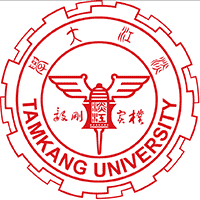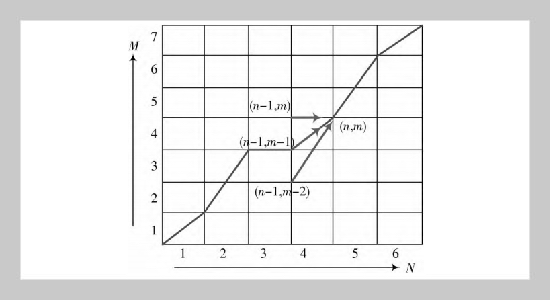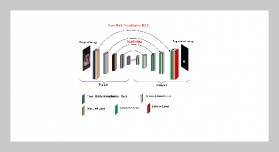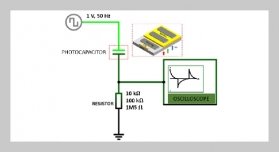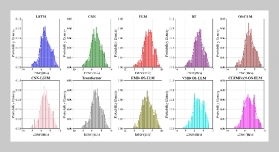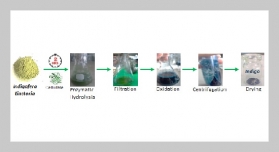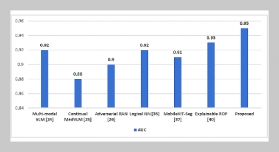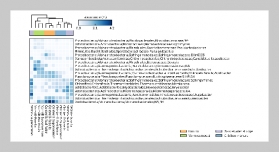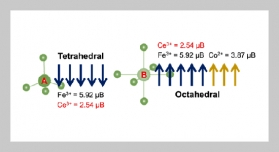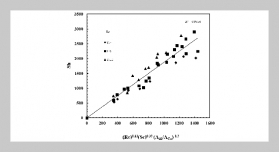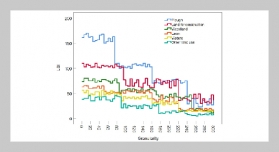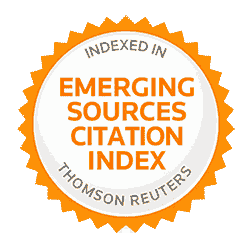- [1] H. Ashraf, A. Waris, S. O. Gilani, U. Shafiq, J. Iqbal, E. N. Kamavuako, Y. Berrouche, O. Brüls, M. Boutaayamou, and I. K. Niazi, (2024) “Optimizing the performance of convolutional neural network for enhanced gesture recognition using sEMG" Scientific Reports 14(1): 2020. DOI: 10.1038/s41598-024-52405-9.
- [2] K.Aurangzeb, K. Javeed, M. Alhussein, I. Rida, S. I. Haider, and A. Parashar, (2024) “Deep Learning Approach for Hand Gesture Recognition: Applications in Deaf Communication and Healthcare." Computers, Materials & Continua 78(1): DOI: 10.32604/cmc.2023.042886.
- [3] L. Zholshiyeva, Z. Manbetova, D. Kaibassova, A. Kassymova, Z. Tashenova, S. Baizhumanov, A. Yerzhanova, and K. Aikhynbay, (2024) “Human machine interactions based on hand gesture recognition using deep learning methods." International Journal of Electrical & Computer Engineering (2088-8708) 14(1): DOI: 10.11591/IJECE.V14I1.PP741-748.
- [4] S. Shen, M. Li, F. Mao, X. Chen, and R. Ran, (2024) “Gesture recognition using mlp-mixer with cnn and stacking ensemble for semg signals" IEEE Sensors Journal 24(4): 4960–4968. DOI: 10.1109/JSEN.2023.3347529.
- [5] Z. Hu, F. Qiu, H. Sun, W. Zhang, Y. Ding, T. Lv, and C. Fan, (2024) “Learning a compact embedding for fine grained few-shot static gesture recognition" Multimedia Tools and Applications 83(33): 79009–79028. DOI: 10.1007/s11042-024-18430-6.
- [6] Y. Jiang and S. Yin, (2023) “Heterogenous-view occluded expression data recognition based on cycle-consistent adversarial network and K-SVD dictionary learning under intelligent cooperative robot environment" Computer Science and Information Systems 20(4): 1869–1883. DOI: 10.2298/CSIS221228034J.
- [7] N. Nayan, D. Ghosh, and P. M. Pradhan, (2024) “A multi-modal framework for continuous and isolated hand gesture recognition utilizing movement epenthesis detection" Machine Vision and Applications 35(4): 86. DOI: 10.1007/s00138-024-01565-9.
- [8] W. Liu, D. Anguelov, D. Erhan, C. Szegedy, S. Reed, C.-Y. Fu, and A. C. Berg. “Ssd: Single shot multibox detector”. In: Computer Vision–ECCV 2016: 14th Euro pean Conference, Amsterdam, The Netherlands, October 11–14, 2016, Proceedings, Part I 14. Springer. 2016, 21 37. DOI: 10.1007/978-3-319-46448-0_2.
- [9] J. Redmon, S. Divvala, R. Girshick, and A. Farhadi. “You only look once: Unified, real-time object detection”. In: Proceedings of the IEEE conference on com puter vision and pattern recognition. 2016, 779–788. DOI: 10.1109/CVPR.2016.91.
- [10] M. J. Shafiee, B. Chywl, F. Li, and A. Wong, (2017) “Fast YOLO: A fast you only look once system for real time embedded object detection in video" arXiv preprint arXiv:1709.05943: DOI: 10.48550/arXiv.1709.05943.
- [11] G. Marques, D. Agarwal, and I. De la Torre Díez, (2020) “Automated medical diagnosis of COVID-19 through Efficient Net convolutional neural network" Ap plied soft computing 96: 106691. DOI: 10.1016/j.asoc.2020.106691.
- [12] S. Benatti, F. Casamassima, B. Milosevic, E. Farella, P. Schönle, S. Fateh, T. Burger, Q. Huang, and L. Benini, (2015) “A versatile embedded platform for EMG acquisition and gesture recognition" IEEE transactions on biomedical circuits and systems 9(5): 620–630. DOI: 10.1109/TBCAS.2015.2476555.
- [13] A. Mujahid, M. J. Awan, A. Yasin, M. A. Mohammed, R. Damaševiˇ cius, R. Maskeli¯ unas, and K. H.Abdulka reem, (2021) “Real-time hand gesture recognition based on deep learning YOLOv3 model" Applied Sciences 11(9): 4164. DOI: 10.3390/app11094164.
- [14] A. Hussain, S. Ul Amin, M. Fayaz, et al., (2023) “An Efficient and Robust Hand Gesture Recognition System of Sign Language Employing Finetuned Inception-V3 and Efficientnet-B0 Network." Computer Systems Science & Engineering 46(3): DOI: 10.32604/CSSE.2023. 037258.
- [15] X. Wu, J. Zhang, and X. Xu, (2018) “Hand gesture recognition algorithm based on faster R-CNN" Journal of Computer-Aided Design & Computer Graphics 30(3): 468–476. DOI: 10.3724/SP.J.1089.2018.16435.
- [16] Q. Zhou, S. Wang, Y. Wang, and J. Zhang,(2023)“Traffic police gesture recognition based on Faster R-CNN and fuzzy matching algorithm." Advances in Transportation Studies 60: DOI: 10.53136/979122180742410.
- [17] H. Baumgartl, D. Sauter, C. Schenk, C. Atik, and R. Buettner. “Vision-based hand gesture recognition for human-computer interaction using MobileNetV2”. In: 2021 IEEE45th Annual Computers, Software, and Ap plications Conference (COMPSAC). IEEE. 2021, 1667 1674. DOI: 10.1109/COMPSAC51774.2021.00249.
- [18] E. Keogh and C. A. Ratanamahatana, (2005) “Exact indexing of dynamic time warping" Knowledge and information systems 7: 358–386. DOI: 10.1007/s10115-004-0154-9.
- [19] Y. Zhang, Z. Guo, J. Wu, Y. Tian, H. Tang, and X. Guo, (2022) “Real-time vehicle detection based on improved yolo v5" Sustainability 14(19): 12274. DOI: 10.3390/su141912274.
- [20] A. Yadav, K. Pasupa, C. K. Loo, and X. Liu, (2024) “Optimizing echo state networks for continuous gesture recognition in mobile devices: A comparative study" He liyon 10(5): DOI: 10.1016/j.heliyon.2024.e27108.
- [21] A. Neac¸su, J.-C. Pesquet, and C. Burileanu, (2024) “EMG-based automatic gesture recognition using lipschitz regularized neural networks" ACM Transactions on Intelligent Systems and Technology15(2): 1–25. DOI: 10.1145/3635159.
- [22] X. Liu, L. Hu, L. Tie, L. Jun, X. Wang, and X. Liu, (2024) “Integration of Convolutional Neural Network and Vision Transformer for gesture recognition using sEMG" Biomedical Signal Processing and Control 98: 106686. DOI: 10.1016/j.bspc.2024.106686.
- [23] G. Zhou, Z. Cui, and J. Qi, (2024) “FGDS Net: A lightweight hand gesture recognition network for human robot interaction" IEEE Robotics and Automation Letters 9(4): 3076–3083. DOI: 10.1109/LRA.2024.3362144.
- [24] Y. Liu, X. Peng, Y. Tan, T. T. Oyemakinde, M. Wang, G. Li, and X. Li, (2024) “A novel unsupervised dynamic feature domain adaptation strategy for cross-individual myoelectric gesture recognition" Journal of Neural En gineering 20(6): 066044. DOI: 10.1088/1741-2552/ ad184f.
